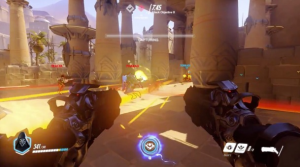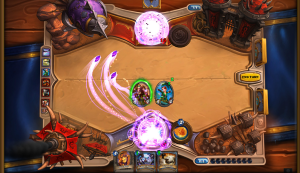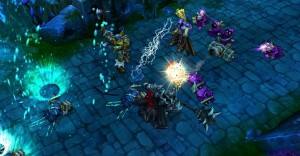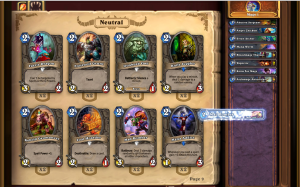Competitive titles have been growing in renowned and popularity over the last few years. The rising interest in e-sports has led to many developers trying to be the next big game. For today’s post, I want to look at what it means to make a competitive title, and the issues to watch out for.
Creating Competition:
We’re not going to be talking about the design of competitive games today, as that’s another post entirely. I want to focus on the bigger picture of creating a game built around competitive audiences.
Creating a game that gets adopted by the competitive community is one of the best forms of recognition for a game. Games like Starcraft 2, Street Fighter and League of Legends have become fixtures of the competitive scene. Each game has their own hardcore base of fans and players that drive people to watch competitions.
There is also the bonus of ad revenue and the acclaim that comes from having massive tournaments. With E-Sports gaining legitimacy, the time is definitely coming for competitive games to become more mainstream.
The problem with creating a competitive game comes down to the never-ending balancing act of hardcore and casual players.
Your Two Consumers:
Competitive games need both new/casual players and a hardcore elite in order to exist. Casual fans keep growing the audience for your game and create a pool of players for new people to play with. The competitive scene attracts people to your game and provides newer players with goals to shoot for.
A competitive game cannot survive with just one group. Without casual players coming in, you lose the ability to grow your game and fan base. Without the hardcore, there won’t be a reason to keep learning the game.
This creates a challenging dynamic to balance; made all the more difficult by the barriers of entry.
1: Toxicity
Whenever you have any game with competitive matchmaking and ELO ratings, tempers can run high when losing. The reason is that you just didn’t lose one match, your rating gets lowered which affects subsequent matches.
This breeds a very toxic environment for new players to try your game in. In League of Legends’ case, they were voted the worst community in all of video games for a time.
There are two big details of this point that we have to talk about. First is a simple one: All competitive games must have effective reporting tools and rules in place.
League of Legends turned things around by enhancing their reporting and becoming stricter against people who break their TOS.
A good sign was how they were willing to ban anyone who violated their rules; including competitive players. People need to know that there are rules in place and unsportsmanlike behavior will not be tolerated.
The second point is a bit harder but still vital: Competitive and Casual play should never interact with each other. There is an obvious big difference in playing football in the park and being in a NFL match. You are technically playing football in both cases, but there’s more at stake with the latter.
Playing in one style should not impact things in the other. If I lose a casual match, that should not affect my ELO. Likewise, competitive players should not go into a casual game expecting tournament play. Both modes need to be clearly labeled and separate.
The other challenge of competitive games is one that always happens and only gets bigger over time.
2: The Learning Curve Wall
Learning a competitive game is not just about playing the game well. You need to understand the Meta: A changing set of guidelines as to the best plays, tactics, etc. The longer a competitive game is out on the market, the harder it becomes to try learning it.
Many competitive games throw everyone into the same tutorial from the start and expect them to master the basics from that. The problem is that tutorial doesn’t stay relevant for long. New characters, new mechanics, new rules, they all change the game. Your tutorial should be updated regularly, as you must have new players staying in order to keep your game growing.
A bigger issue is when you introduce new elements that a starting player won’t have access to. Hearthstone is horrible with this point.
A new player is only going to have access to the starter pack of cards. When they go into ranked play, they’ll be fighting people who have access to cards from the other decks and adventures.
With the change in Meta, there are new cards that are flat-out superior to the starting options and packs. This creates a negative feedback loop of needing cards to have a chance at winning, but unable to win any matches to get the packs they need. There’s also the fact that they won’t even know how to proceed and what decks to even look at.
And before anyone says it, you never, ever, ever, force new players to spend additional money at the very start. Nothing turns someone off from a game more than being told that their only way of winning is to spend money on stuff that they don’t even know about.
Starcraft 2 also suffers in this regard. The game makes no real attempt at teaching the player about competitive play or what to expect. The singleplayer and tutorials are all built around player vs. the AI, which is not the same as competitive play. There should really be two tutorials for games like this: A singleplayer one, and an advanced one for multiplayer/competitive play.
I have to point out the amazing tutorial for the fighting game Skullgirls. The tutorial comes with beginner lessons for people who never played a fighting game before, and advanced lessons that delve into the topics that professional players know about.
With that point, we can turn to the final consideration for this post that you need to follow as a designer.
3: Effective Pacing
When you’re trying to balance casual and competitive play, there needs to be progression set up. You don’t want to throw casual players into ranked matchmaking from the start, and competitive players don’t want to go backwards.

There should be ratings systems in place to keep casual and competitive players away from each other
There should always be systems in place to group players effectively. This is where the idea of an ELO rating comes into play. As a new player, I will never have to worry about going up against tournament-ranked players at the start.
Complexity should be introduced slowly over play and be reduced at the start. With League of Legends, you can only play the free champions at the start, and the talent trees and rune pages aren’t accessible.
Overwatch locks competitive play until you gain enough levels; making sure that someone understands the game before going into ranked. Shadowverse’s story mode gives you a tutorial on the philosophy of playing the game and unique tutorials for each faction. Once again, Hearthstone is bad example of this.
Rank in Hearthstone has no relation to the cards that you have or can make use of. My rank 24 is not the same as someone else who is rank 24, but has been playing the game for months. I almost think that Hearthstone should have an ELO rating on top of the rank for season play to make it easier to balance match-ups for new players.
Effective pacing is not only a good rule for competitive games, but general game design. Being able to understand the best way to gate mechanics and introduce your game to new players is an important skill to master.
Competitive Spirit:
Competitive games require more work to get balanced compared to other titles. You only have a short window to establish your game and hope that it becomes accepted by the competitive community. Sometimes a game may be snubbed, or something unexpected may become popular. Smash Bros was never designed around E-Sports play, but the community took to it and it’s now a part of EVO.
If your game gets snubbed, chances are that any improvements you make will not be enough to attract the competitive scene back. At the same time, make your game completely inaccessible to new players and you’ll find that there’s not much interest in seeing your game grow on the competitive scene.
There’s a lot more here that we can talk about, but we’re going to wrap it up for now. While I may be an expert in talking about game design, I can tell you with complete certainty that you won’t be seeing me competing at EVO or WCG any time soon.
If you enjoyed this post, please consider donating to the Game-Wisdom Patreon campaign. Your donations can help to keep the site going and allow me to produce more great content. Follow me on Twitter @GWBycer, and you can find daily video content on the Game-Wisdom YouTube channel.





